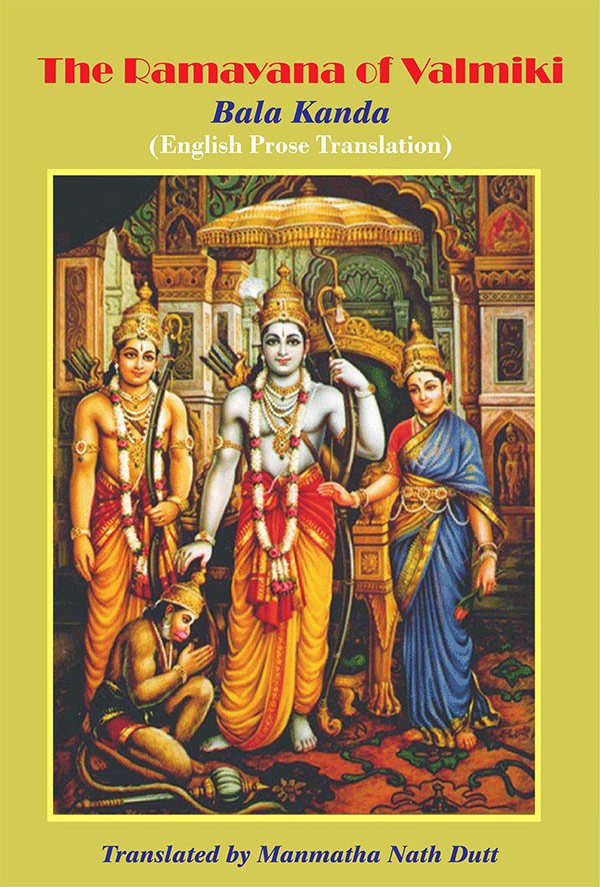Ramayana of Valmiki
by Hari Prasad Shastri | 1952 | 527,382 words | ISBN-10: 9333119590 | ISBN-13: 9789333119597
This page is entitled “prince bharata retires to nandigrama” and represents Chapter 115 of the Ayodhya-kanda of the Ramayana (English translation by Hari Prasad Shastri). The Ramayana narrates the legend of Rama and Sita and her abduction by Ravana, the king of Lanka. It contains 24,000 verses divided into seven sections [viz., Ayodhya-kanda].
Chapter 115 - Prince Bharata retires to Nandigrama
[Full title: Prince Bharata retires to Nandigrama and rules the kingdom from that city].
The sorrowing Bharata, firm in his resolve, having brought his mothers back to Ayodhya, said to the holy Guru Vasishtha and the elders:—
“I crave your permission to retire to Nandigrama and there endure the woes occasioned by Shri Rama’s absence. The king has departed and my elder brother has entered the forest. I shall, therefore, await the return of Shri Rama, since verily he alone is Lord of Ayodhya.”
Shri Vasishtha and the counsellors, hearing the words of Prince Bharata, answered him saying: “O Prince, your words, inspired by devotion to your brother, are worthy of praise. Verily, they do you honour! Who will dare oppose you, who art deeply attached to your brother and who, in this land, has reached such an exalted state?”
Perceiving the counsellors reconciled to his purpose, the prince said to Sumantra: “Bring hither the chariot!”
The chariot having come, Bharata, after conversing with his mothers, mounted the equipage with his brother Shatrughna. Accompanied by the priests and ministers, the two princes cheerfully proceeded to Nandigrama, the Guru Vasishtha and the pious brahmins leading the procession.
Then the army, elephants, horses and chariots together with the people of the capital, followed him unbidden. The peerless Bharata filled with fraternal love, carrying the sandals of Shri Rama on his head, at last reached Nandigrama. Dismounting from the chariot, he addressed his spiritual preceptor and the elders, saying: “My brother, Shri Rama, gave this kingdom to me, as a precious trust, verily these sandals, decorated with gold shall represent him.”
Once more lifting the sandals reverently to his head, he addressed the people of the capital, saying: “You Men of Ayodhya, accept these sandals as symbols of the feet of Shri Rama. Let them rest beneath the royal canopy and wave the camara over them. These are the sandals of our supreme Guru and by them will righteousness be established in the kingdom. I shall preserve the trust lovingly reposed in me by Rama, till his return. When he returns to Ayodhya, I, myself, will assist him to put on the sandals. Then I, united with him once more, will deliver the kingdom to him and like a son will I honour him. By restoring the capital and kingdom to Rama, I shall wash away the stigma of dishonour brought on me by my mother. Shri Rama will be installed and his subjects made happy; then shall ill-fame pass away, and I shall win exceeding honour from the people.”
Thus lamenting, the afflicted Bharata, with the assistance of his counsellors, retired to Nandigrama and ruled the kingdom from that city. With matted locks, assuming the bark dress of an ascetic, Shri Bharata dwelt in Nandigrama, protected by his army.
Residing in Nandigrama, obedient to Shri Rama and faithful to his promise, Shri Bharata, placing the sandals on the royal throne, spreading the canopy over them and waving the camara above them, committed the seals of the kingdom to their keeping, he, himself, passing his life as a servant of Rama.
Every matter of import and all the business of state was first laid before the sandals, and every gift brought to the king was first offered to them, and afterwards treated as occasion required.
